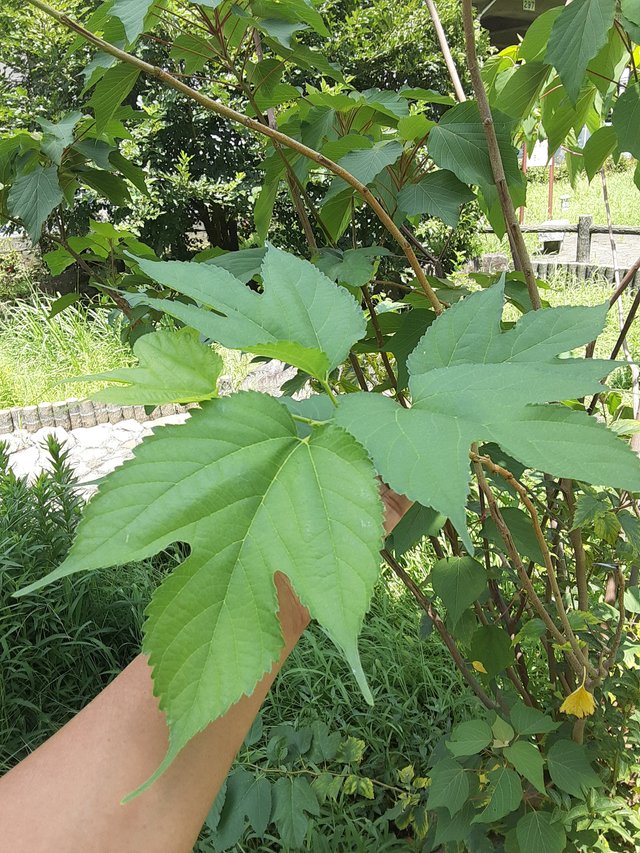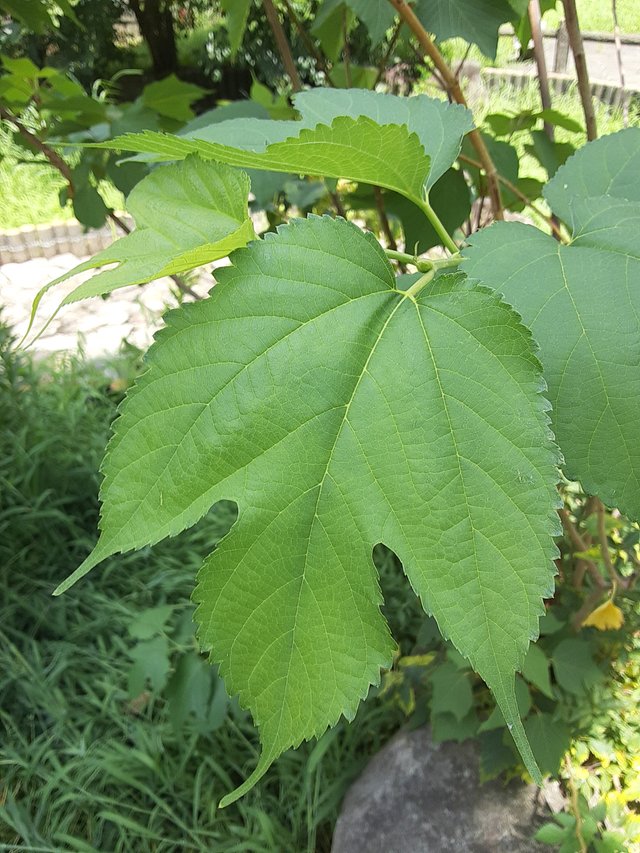Broussonetia papyrifera, or paper mulberry, has remarkably variable leaves that can be simple, lobed, or even mitten-shaped, often on the same plant

Broussonetia papyrifera, commonly known as paper mulberry, is a fast-growing tree renowned for its remarkable leaf variation. This characteristic is one of its most distinctive features.
The leaves of the paper mulberry exhibit an extraordinary range of shapes, from simple oval to deeply lobed, often on the same plant. This variability, known as heterophylly, is a fascinating botanical trait. The leaves are typically large, with serrated margins and a rough texture on the upper surface. They are often heart-shaped or mitten-shaped at the base, adding to their unique appearance.

Another notable feature of the paper mulberry leaf is its pubescence. The underside of the leaves is covered with fine hairs, giving them a soft, velvety feel. These hairs also help to insulate the plant and reduce water loss. The leaves are deciduous, changing color to a yellowish-green in autumn before falling.
Due to its rapid growth and ability to propagate easily, the paper mulberry has become an invasive species in many regions. However, its distinctive and versatile leaves remain a subject of interest for botanists and nature enthusiasts alike.
Ref.:
 |  |
Upvoted! Thank you for supporting witness @jswit.